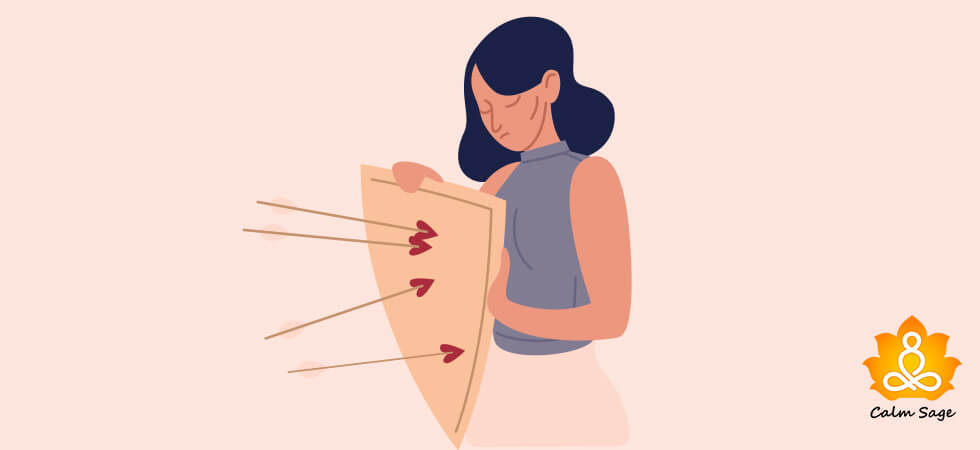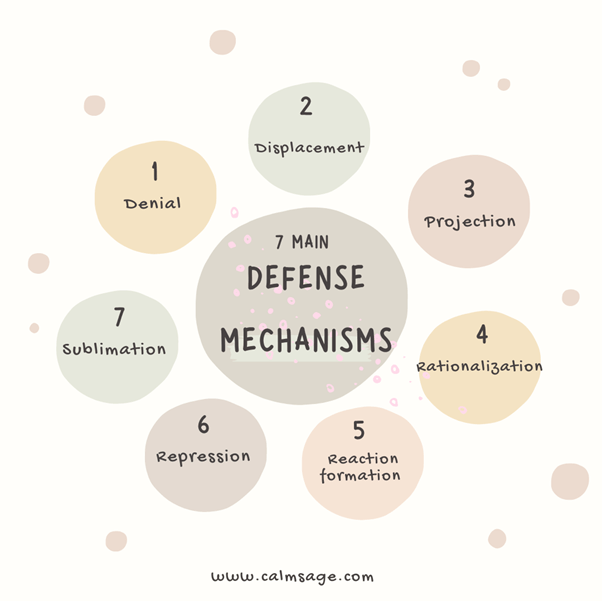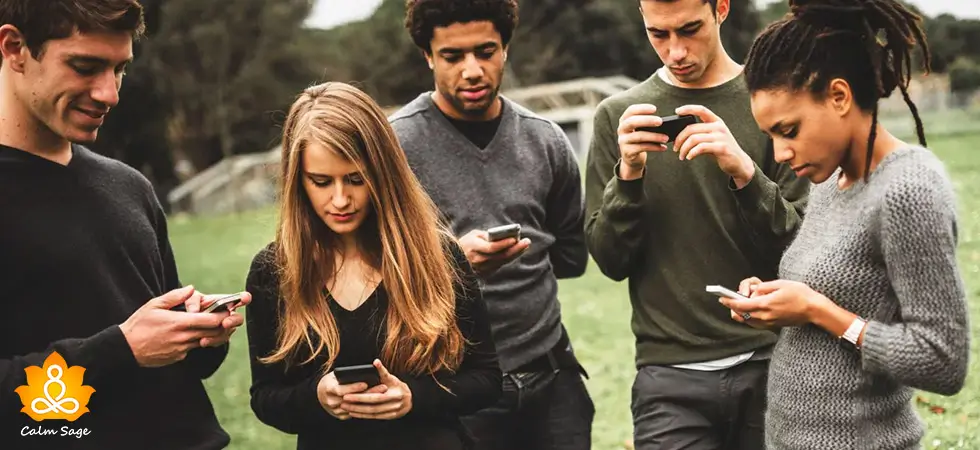What’s Your Defense Mechanisms | Are you Practicing #5 Too?

Did you know?
We have an inbuilt system that protects us from feelings of guilt or anxiety. This system works on an unconscious level and is basically there to keep unpleasant feelings at bay and let the good feelings stay longer. This system is known as a defense mechanism.
Surprisingly enough we all use defense mechanism one or the other way. Up to a point, it is indeed useful but if used excessively it might cause trouble. In fact, we tend to use it without even realizing it. But, anymore!
Today, we will address these defense mechanisms and find out which one we are using. We will Read How these Coping Mechanisms works and and how to deal if you are using any of the Defense Mechanisms.
What are Defense Mechanisms?
Defense mechanisms are also known as ego defense mechanisms. This concept was first proposed by Sigmund Freud and was later taken up by her daughter Anna Freud. They are psychological strategies that we used (unconsciously) to protect ourselves from anxiety. It also prevents unwanted thoughts from entering our conscious mind.

Let us understand the 10 common defense mechanisms with examples.
Most Common Defense Mechanisms are:
1. Denial
When an individual refuses to admit reality or fails to recognize something that has occurred, he might be using denial as the defense mechanism. Reason being that it might be too uncomfortable to face or agree with, considering its emotional aspect. It is one of the most commonly used defense mechanisms.
Alcohol consumers that may not agree to the fact that alcohol consumption is injurious to health is a perfect example of this defense mechanism.
2. Repression
In this defense mechanism, an individual blocks difficult thoughts to enter into consciousness or awareness. They totally try to hide them or forget them completely. When these memories are repressed they start showing up in an individual’s behaviors and relationships.
The most common example of repression is a child who has been through abuse, faces difficulty in forming new relationships as they grow.
3. Displacement
When you can’t vent out your feelings of anger and frustration on the source of it you end up displacing it to someone who is not threatening. They are not the true source of your strong emotions but they are safer and less problematic options to react to.
A good example of this defense mechanism is when your boss yells at you at work and you can’t shout back at him. So, you go home and take all that frustration out either on your partner or your kids.
4. Regression
We all develop through different stages of life. While we might think that once we pass through a developmental stage we won’t go back to it. But, that’s not true. When we feel threatened we might revert to an earlier stage of development to cope with it.
A child might start bed-wetting on the arrival of a new child, because of a lack of attention from parents. This example of regression tells us how a child shifts back to an earlier stage to cope with divided attention by parents.
5. Projection
In this defense mechanism, an individual will ascribe their unacceptable feelings to others, because accepting them could make them feel uncomfortable. It is not just limited to misattributing your unacceptable feelings to the other person but also the feelings and motives that are uncomfortable to accept. This is often practiced when an individual dislikes the other person.
An example of this defense mechanism will be when you dislike a co-worker or a batch mate you might choose to tell yourself and others that they dislike you.
6. Sublimation
Sublimation is also referred to as a positive strategy. Herein an individual channelizes his unacceptable motives, urges, and feelings into a productive and acceptable outlet (not onto a person). This way an individual refocuses on his energy on social acceptable behavior to keep anxiety away.
Example of this defense mechanism will be an individual with sexual impulses which he cannot act upon so he might shift his focus on exercising rigorously.
7. Rationalization
An individual is likely to explain unacceptable behavior or life outcomes in the light of seemingly logical reasons or their own set of facts. This defense mechanism is generally used when things change in the face of reality.
For example if a relationship that an individual might have thought of lasting forever fails he might try to explain it by saying, “I knew this is how it will end, it was never meant to work.”
8. Intellectualization
When an individual makes use of an intellectual component to avoid the stressful and emotional aspect of a situation he is using this defense mechanism. This helps them reduce anxiety related to stressful situations.
The most classic example of this defense mechanism is when a person is diagnosed with a terminal illness he might focus on educating himself about the disease and remain distant from reality.
9. Compartmentalization
This defense mechanism is used to avoid cognitive dissonance and the mental discomfort accompanied with it. Herein a person separates their life into independent sectors and behaves as if one has separate sets of values.
A man who is a well-known pharmacy holder may be having a drug business running along with it.
10. Reaction Formation
This defense mechanism is also seen as an extreme point of denial. The individual will not only dismiss the reality but will also behave in an opposite way of what they truly feel. Often they choose to behave in an overly positive or obsessive manner.
An example of this defense mechanism is a person who has hate feelings for her colleague or boss will choose to show excessive love towards them.
Other Defense Mechanism You Might be using
11. Suppression
When an individual represses the individual consciously removes the information. The information might disappear for some time but it actually continues to influence someone through their behavior.
12. Acting Out
It’s human behavior to engage in action to cope with stress instead of acknowledging or understanding some important feelings. For example, when someone starts throwing something against the wall, we can tell that they are angry and in order to cope with this they engage in stress-coping activities which can be negative as well.
13. Aim Inhibition
When someone accepts a modified type of goal derived from their original call, this phenomenon is known as aim inhibition. For example, you might see a kid aiming to become a coach instead of becoming a professional or expert in the field.
14. Altruism
When someone satisfies their internal needs by supporting others, it is known as altruism. For example, when an individual provides a supportive and secure environment to their loved ones to recover from the insecure attachment experienced during childhood.
15. Avoidance
When someone refuses to encounter unpleasant situations or objects, it is known as an avoidance type of defense mechanism. For example, you might see someone avoiding visiting a specific place related to trauma or unpleasant situations.
16. Compensation
A compensation type of defense mechanism is considered when someone overachieves in a specific area to compensate for failures. For example, you might see an employee working hard to compensate for the long leave.
17. Dissociation
When someone is removed or separated from a specific experience, they might be dealing with some stressful situations, and this type of defense mechanism is known as dissociation.
18. Humor
When someone points out the ironic or funny side of a situation in a traumatic or stressful situation, it is referred to as a humor type of defense mechanism.
Also Read: Why Use Humor as a Motivational Tool in the Workplace?
19. Passive-Aggression
When an individual indirectly expresses anger instead of directly telling someone the reason, it is considered to be silent treatment or passive aggression.
20. Undoing
When an individual tries to make up their inappropriate behaviors, thoughts, or feelings, it is known as an undoing type of defense mechanism. For example, such individuals might try to do something nice for them to remove guilt or anxiety.
Final Words:
You might notice that some of these defense mechanisms are used commonly by us in our day-to-day life. Which is okay! But, remember defense mechanisms are two edged-sword; they can be both good and bad. When used in an optimal amount it works in your favor but if used in excess and appropriately it might hinder your way in perceiving reality.
If you see overusing these defense mechanisms and can identify their negative impact on your life, seeking help from a mental health professional is advised.
More power to you…




















